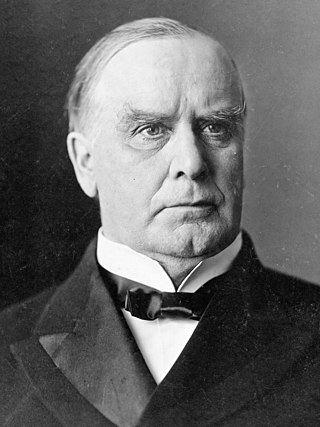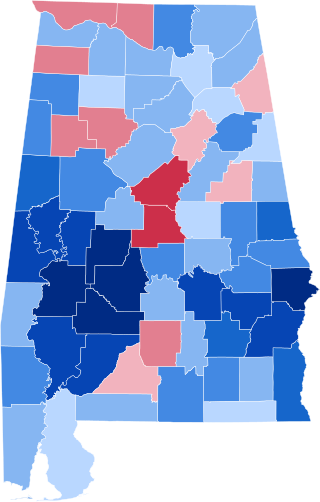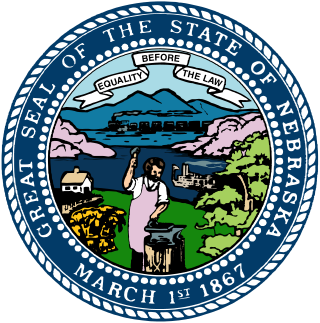
The 1896 United States presidential election was the 28th quadrennial presidential election, held on Tuesday, November 3, 1896. Former Governor William McKinley, the Republican nominee, defeated former Representative William Jennings Bryan, the Democratic nominee. The 1896 campaign, which took place during an economic depression known as the Panic of 1893, was a political realignment that ended the old Third Party System and began the Fourth Party System.

The 1900 United States presidential election was the 29th quadrennial presidential election, held on Tuesday, November 6, 1900. In a re-match of the 1896 race, incumbent Republican President William McKinley defeated his Democratic challenger, William Jennings Bryan. McKinley's victory made him the first president to win a consecutive re-election since Ulysses S. Grant accomplished the same feat in 1872. Until 1956, this would be the last time in which an incumbent Republican president would win re-election after serving a full term in office. This election saw the fifth rematch in presidential history, something that would also not occur again until 1956. This was also the first rematch to produce the same winner both times.

The 1904 United States presidential election was the 30th quadrennial presidential election, held on Tuesday, November 8, 1904. Incumbent Republican President Theodore Roosevelt defeated the conservative Democratic nominee, Alton B. Parker. Roosevelt's victory made him the first president who ascended to the presidency upon the death of his predecessor to win a full term in his own right. This was also the second presidential election in which both major party candidates were registered in the same home state; the others have been in 1860, 1920, 1940, 1944, and 2016.

The 1908 United States presidential election was the 31st quadrennial presidential election, held on Tuesday, November 3, 1908. Republican Party nominee William Howard Taft defeated three-time Democratic nominee William Jennings Bryan.

William Jennings Bryan was an American lawyer, orator, and politician. Beginning in 1896, he emerged as a dominant force in the Democratic Party, running three times as the party's nominee for President of the United States in the 1896, 1900, and 1908 elections. He served in the House of Representatives from 1891 to 1895 and as the Secretary of State under Woodrow Wilson from 1913 to 1915. Because of his faith in the wisdom of the common people, Bryan was often called "the Great Commoner", and because of his rhetorical power and early fame as the youngest presidential candidate, "the Boy Orator".
The 1900 Democratic National Convention was a United States presidential nominating convention that took place the week of July 4, 1900, at Convention Hall in Kansas City, Missouri.

The 1900 United States presidential election in Missouri took place on November 6, 1900. Voters chose 17 electors to represent them in the Electoral College via a popular vote, pitting incumbent Republican President William McKinley and his running mate Theodore Roosevelt against the Democratic ticket of challenger William Jennings Bryan and Adlai Stevenson.

The 1908 United States presidential election in New York took place on November 3, 1908. All 46 contemporary states were part of the 1908 United States presidential election. Voters chose 39 electors to the Electoral College, which selected the president and vice president.

The 1900 United States presidential election in New York took place on November 6, 1900. All contemporary 45 states were part of the 1900 United States presidential election. Voters chose 36 electors to the Electoral College, which selected the president and vice president.

The 1896 United States presidential election in New York took place on November 3, 1896. All contemporary 45 states were part of the 1896 United States presidential election. Voters chose 36 electors to the Electoral College, which selected the president and vice president.

The 1900 United States elections elected the 57th United States Congress. The election was held during the Fourth Party System. Republicans retained control of the presidency and both houses of Congress, while third parties suffered defeats.

The 1908 United States presidential election in Virginia took place on November 3, 1908, as part of the 1908 United States presidential election. Voters chose twelve representatives, or electors to the Electoral College, who voted for president and vice president.
Newspapers made endorsements of candidates in the 1904 United States presidential election. Incumbent President Theodore Roosevelt who took office after William McKinley was assassinated in 1901 was the Republican candidate, and Alton B. Parker the Democratic candidate. Harper's Weekly ran a cartoon in September 1904 called "Tom's Dream", a reference to DNC Chairman Thomas Taggart, and his hope that the major newspapers of the country would endorse Parker. His dream largely did not come true, as most newspapers endorsed Roosevelt in this election.

The 1900 United States presidential election in Vermont took place on November 6, 1900 as part of the 1900 United States presidential election. Voters chose four representatives, or electors to the Electoral College, who voted for president and vice president.

The 1900 United States presidential election in Idaho took place on November 6, 1900. All contemporary 45 states were part of the 1900 United States presidential election. State voters chose three electors to the Electoral College, which selected the president and vice president.

The 1896 United States presidential election in Iowa took place on November 3, 1896. All contemporary 45 states were part of the 1896 United States presidential election. Voters chose 13 electors to the Electoral College, which selected the president and vice president.

The 1900 United States presidential election in Kentucky took place on November 6, 1900. All contemporary 45 states were part of the 1900 United States presidential election. Voters chose 13 electors to the Electoral College, which selected the president and vice president.

The 1900 United States presidential election in Alabama took place on November 6, 1900. All contemporary 45 states were part of the 1900 United States presidential election. Alabama voters chose eleven electors to the Electoral College, which selected the president and vice president.

The 1900 United States presidential election in Maryland took place on November 6, 1900. All contemporary 45 states were part of the 1900 United States presidential election. Maryland voters chose eight electors to the Electoral College, which selected the president and vice president.

The 1908 United States presidential election in Nebraska took place on November 3, 1908. All contemporary 46 states were part of the 1908 United States presidential election. Voters chose eight electors to the Electoral College, which selected the president and vice president.
















